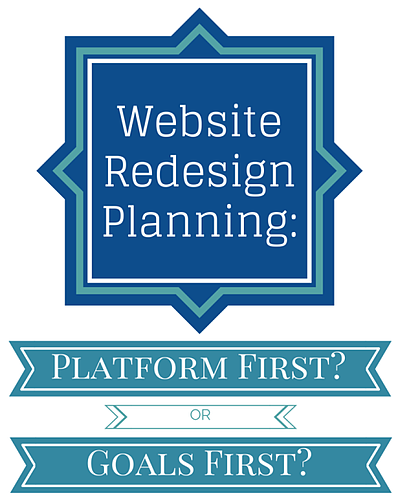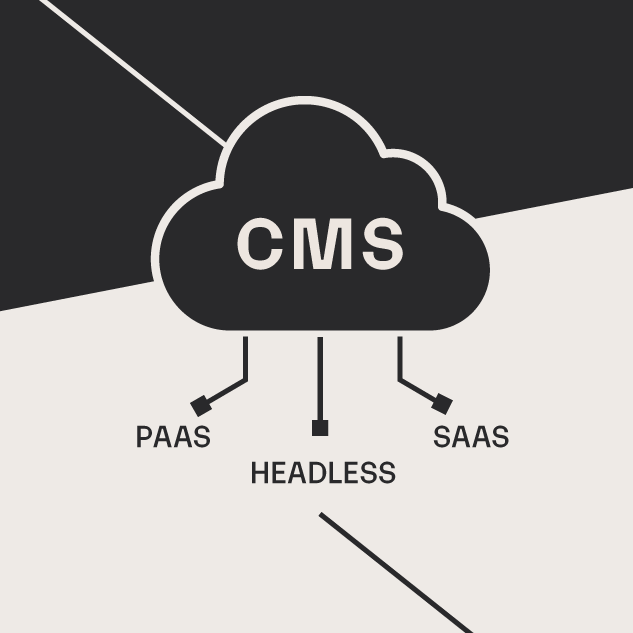What’s More Important, a Website’s Platform or its Goals?
Chris Osterhout SVP of Strategy#CMS

When planning a website redesign, is it better select the platform first, or define the site's needs and goals before making the selection?
 Suppose you’re building a new office for your business. When you’re planning this project, who makes the decisions about the office’s construction, floor plan, interior design, etc.? The considerations of the building maintenance staff are important, but their preferences for what is easiest to install and maintain shouldn’t be the only thing affecting the decision. You’ll want to make the office a place that encourages the best in your employees, providing a comfortable environment and all the amenities they need for making your company the best at what you do.
Suppose you’re building a new office for your business. When you’re planning this project, who makes the decisions about the office’s construction, floor plan, interior design, etc.? The considerations of the building maintenance staff are important, but their preferences for what is easiest to install and maintain shouldn’t be the only thing affecting the decision. You’ll want to make the office a place that encourages the best in your employees, providing a comfortable environment and all the amenities they need for making your company the best at what you do.
It’s not a perfect analogy, but redesigning websites works the same way. The people who make the decisions about which Content Management System (CMS) platform to use for a website are often disconnected from the people who drive the business decisions, which can result in a site that does not appropriately meet the company’s goals, or one that requires a lot of customization and extra effort to accomplish those goals.
We speak to clients every day who are thinking about a website rebuild or technology shift, and when trying to determine which platform will provide the best solution for their site, they aren’t sure where to start. What is more appropriate: to select the platform first, or to identify the site’s goals and needs and determine which platform will meet them best?
Platform-first: Technology Over All
A common scenario that we encounter when working with clients on website redesigns is that their internal IT infrastructure only supports a specific technology stack, and this is the main driver of their decision of which CMS platform to use. For companies that support Microsoft Windows, choices are limited to a CMS based on ASP.net (such as Ektron or EPiServer), while companies who use Linux will use a PHP or Java-based CMS (such as WordPress or Drupal). This limitation on supported platforms is based solely on the technology, without enough focus on considering the site’s business goals and needs.
This type of approach was more common when most companies hosted websites internally, which meant that their own IT staff was responsible for the site’s maintenance. As more options for external hosting, including virtual and cloud-based hosting, have become available, these concerns have become less of a make-or-break issue, and the requirement for companies to select a platform before beginning a website redesign has become less common.
As online business strategies continue to shift in a marketing-centric direction, we’re seeing substantial shifts in budget allocation away from companies’ IT departments and toward marketing departments. Many companies’ marketing departments now often control not just the operation of a website, but also its hosting, software licensing, and maintenance.
As more of the connected systems such as CRMs, MAPs, etc. continue to move toward the cloud, the tolerance for IT leaders to adopt new platforms and more readily relinquish control to other departments has increased. This openness to other options allows companies to focus on their business goals when redesigning a website, rather than being limited to certain technological options.
Goals-first: Consider the Business Needs
As the trend of marketing steering the boat when it comes to website decisions continues, it becomes more and more important to define a site’s goals and strategies before making any decisions about a site’s platform. When planning for a website redesign, a company will want to define the Key Performance Indicators (KPIs) that they want to meet, and they’ll need to consider how the redesigned site will help meet them.
When defining these goals, a company will want to consider what types of conversions the site will be generating, what kinds of personalization to implement when targeting different audiences, and which third-party software will need to tie in to the site. Taking all of these aspects into consideration will ensure that the site provides the necessary tools and options for the marketing team and is able to meet the needs of its audience.
By defining these goals at the beginning of the redesign process before selecting a platform, a company can make sure the chosen CMS will meet these needs and allow marketers to maintain the website, connect with the appropriate audience, and drive traffic. By bringing these business drivers to the forefront and allowing them to guide the way to the selection of the CMS, the website won’t be limited by the capabilities of its technology.
At the end of the day, it can be complicated to figure out these business decisions and determine what goals are most important for a website redesign. Performing Discovery can help flesh out these goals and KPIs, helping determine exactly what the redesigned website needs to accomplish and allowing a company to make the best decision for which platform to use. Do you have any questions for us about what options different CMS platforms can provide? Do you need help defining the goals of your website? Please contact us to speak to a Solutions Engineer, or feel free to leave any other questions you might have in the comments below.
Related Posts

What Does Umbraco 7 End of Life (EOL) Mean for Your Website?
Diagram's Chris Osterhout explores the details of Umbraco 7's end of life and what to consider when planning your CMS upgrade.

Choosing the Right Cloud CMS: Key Factors to Consider
Selecting the right cloud-based Content Management System (CMS) demands a careful balance between budget, technical expertise, and business needs.
Results Matter.
We design creative digital solutions that grow your business, strengthen your brand and engage your audience. Our team blends creativity with insights, analytics and technology to deliver beauty, function, accessibility and most of all, ROI. Do you have a project you want to discuss?
Like what you read?
Subscribe to our blog "Diagram Views" for the latest trends in web design, inbound marketing and mobile strategy.
